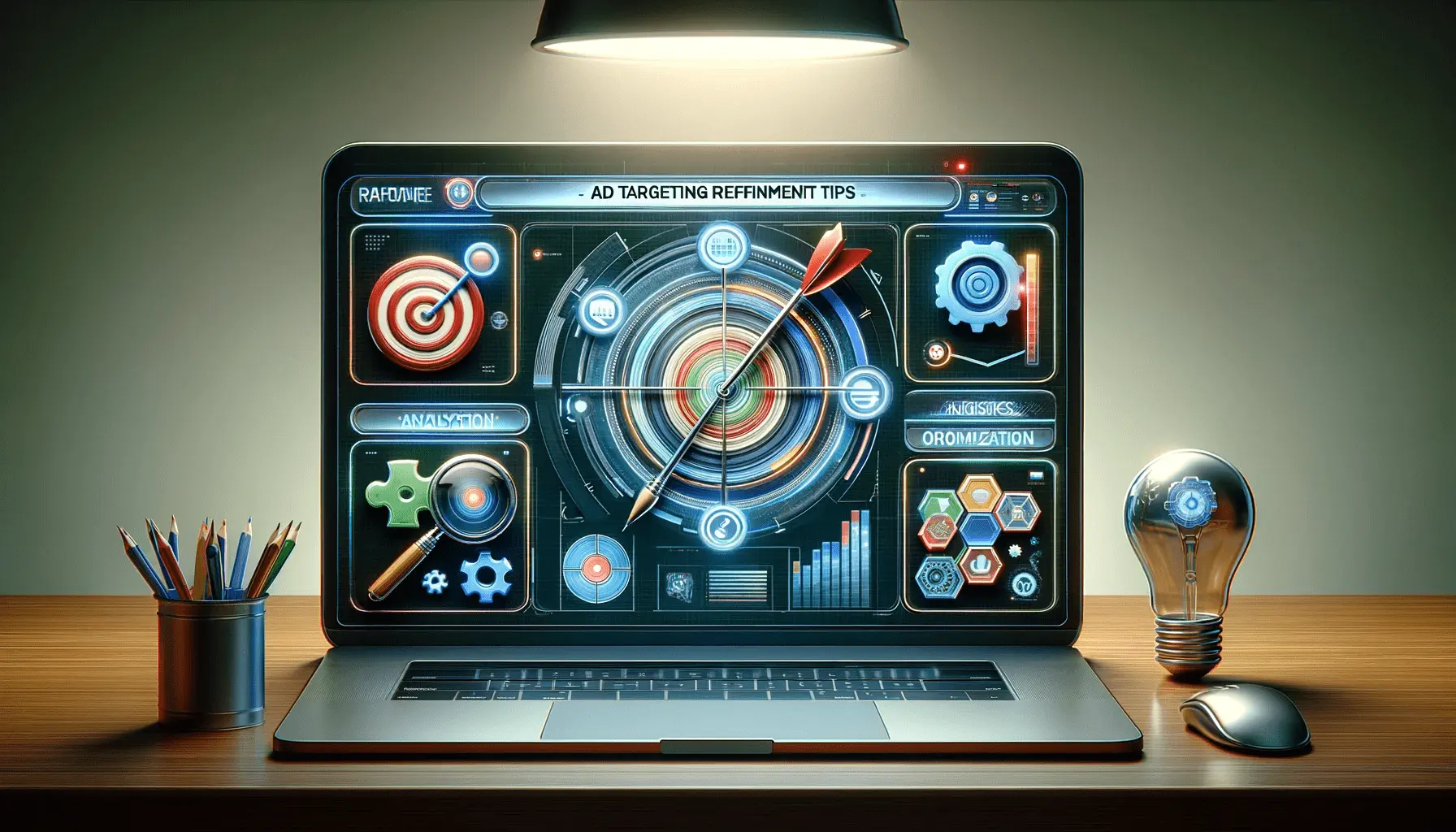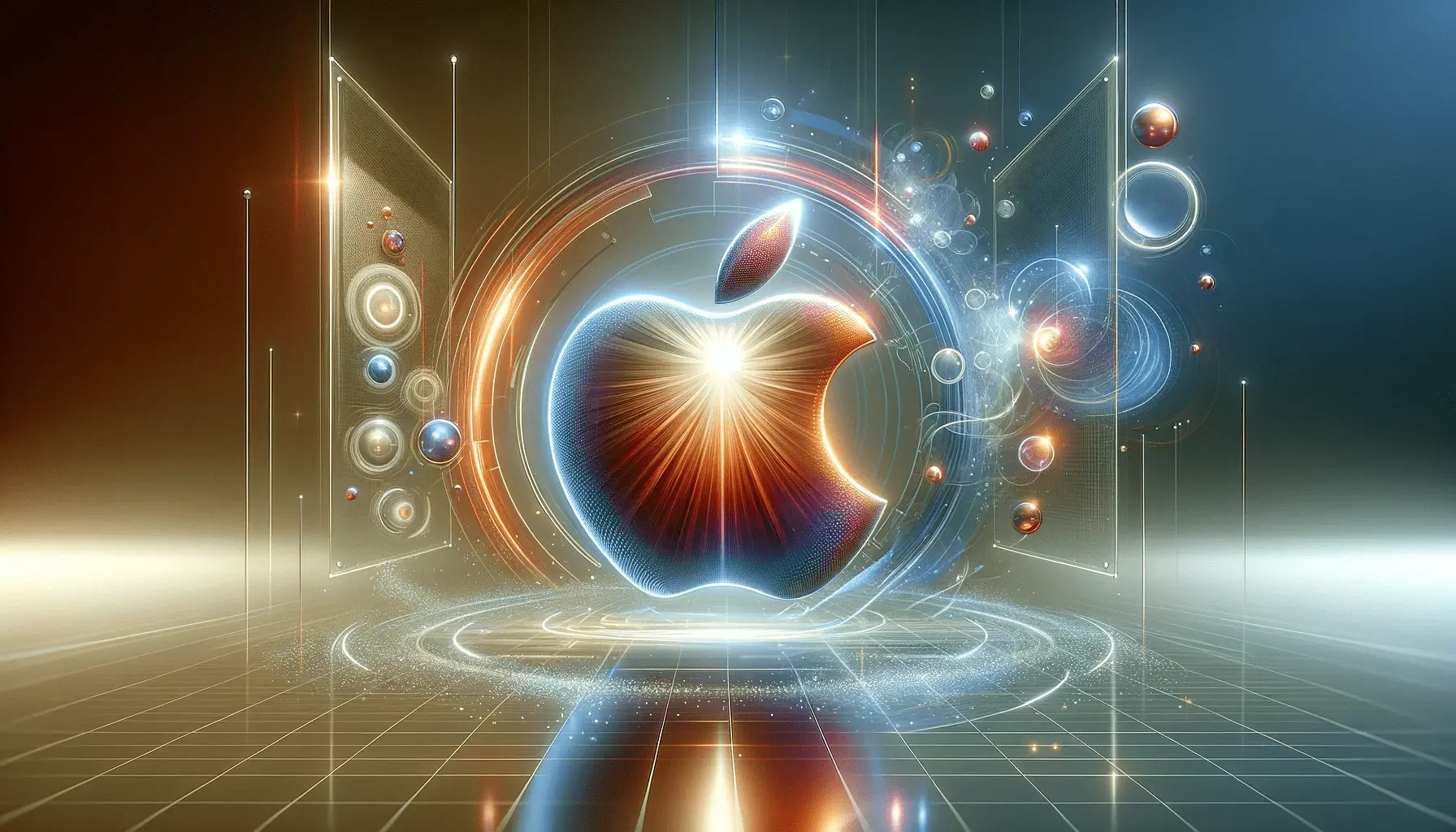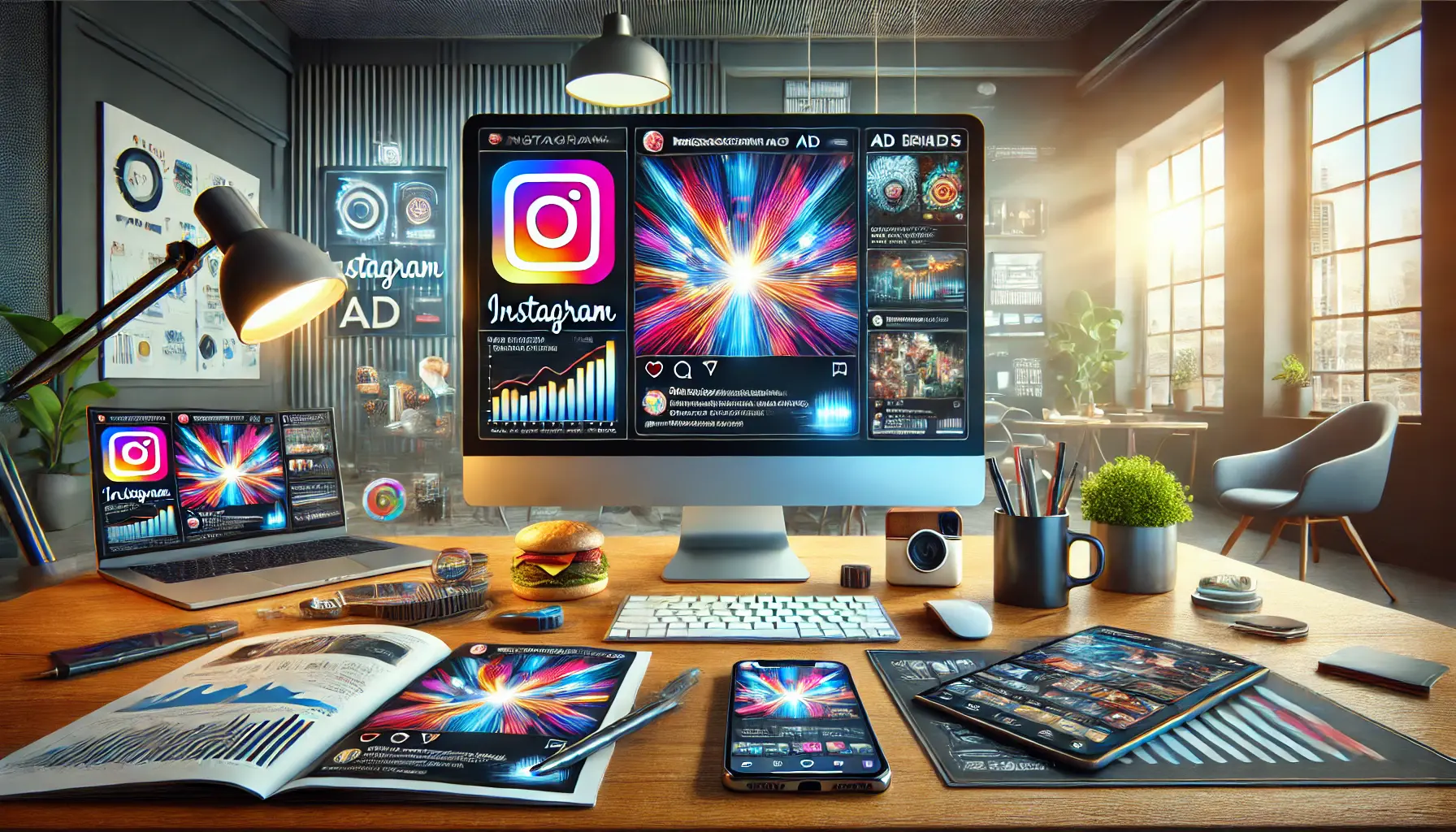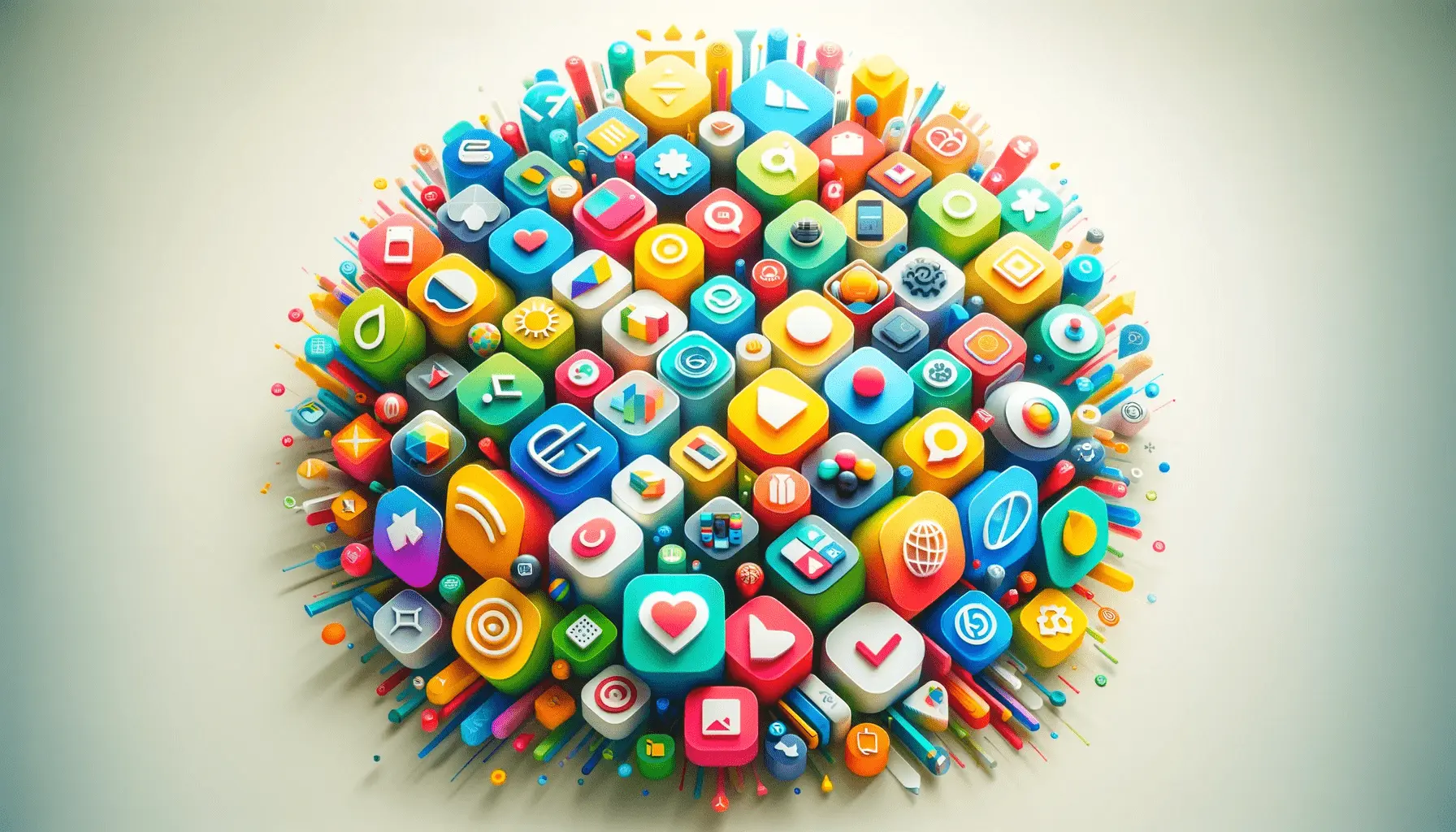In today’s competitive online market, your LinkedIn advertising campaigns depend on great visual creatives if you want to be successful.
Great visual creatives not only grab your audience’s attention but also convey your brand message in the best way possible, leading to higher engagement and conversion ratesThe percentage of users who take a desired action after clicking an ad..
In this article, we are going to dive into five essential tips on how to drive your LinkedIn ads through great visual creatives.
- Define Clear Objectives for Your LinkedIn Ads
- Design Visually Engaging Content
- Craft Concise and Compelling Ad Copy
- Leverage Video and Interactive Elements
- Use A/B Testing to Streamline Visual Creatives
- Maximizing LinkedIn Ads with Successful Visual Creatives
- Frequently Asked Questions About Visual Creatives in LinkedIn Ads
Define Clear Objectives for Your LinkedIn Ads
Before you set out to create your visual creatives, you should set definite and measurable objectives for your LinkedIn ad campaigns.
Being aware of what you must achieve will influence the process of creating and ensure your visuals communicate your desired targets.
Adhere to the following steps in setting your objectives:
- Identify your primary goal: Are you looking to establish brand awareness, drive website traffic, generate leads, or promote a specific product or service? Knowing your goal will dictate the direction your visual creatives take.
- Keep visuals consistent with campaign objectives: Let the imagery, color scheme, and overall layout of your visual creatives coincide with the intended goal. For instance, a brand awareness campaign would utilize vibrant and recognizable imagery, while a lead generation campaign would emphasize clear calls-to-action.
- Establish measurable goals: Determine key performance indicators (KPIs) such as click-through rates, conversion rates, or engagement scores to gauge how well your visual creatives perform in achieving your objectives.
With clear objectives, you’re laying the foundation for creating visual creatives that not only capture attention but also drive substantial results in your LinkedIn ad campaign.
Setting clear objectives for your LinkedIn ad campaigns helps ensure your visual creatives align with business goals, enhancing engagement and conversions.
Design Visually Engaging Content
Visually engaging content is crucial to attract your audience’s attention on LinkedIn.
High-quality visual creatives not only draw in the audience but also convey your brand’s message effectively, leading to increased engagement and conversions.
Utilize High-Quality and Relevant Images
Using high-quality and relevant images for your target audience is essential.
Consider the following points:
- Use real images: Use pictures that depict actual scenarios relevant to your audience, rather than overly staged or generic stock photos.
- Incorporate human elements: Photos of individuals, especially faces, are more likely to engage and draw users to interact with your ads.
- Utilize clear and high-definition images: Take advantage of clear, high-definition images to maintain professionalism and credibility.
According to CommonMind, images, especially those featuring people and faces, can help create emotional connections that encourage users to engage with your visual creatives.
Keep Things Consistent in Branding
Consistent branding in your visual creatives enhances brand recall and trust.
Ensure your images align with your brand’s identity by:
- Utilizing brand colors and fonts: Use your company’s color palette and typography to create a cohesive and recognizable look.
- Having your logo front and center: Place your logo in a prominent yet non-distracting position so that it does not overshadow the primary message but remains noticeable.
- Being aligned with brand style and tone: Ensure that the imagery and overall design reflect your brand’s personality and values.
As Databox points out, employing your brand colors, typefaces, and design elements to match your brand’s tone and voice is of utmost importance for effective visual creatives.
Optimize Visuals for Mobile Viewing
Since a large portion of LinkedIn users access the platform through mobile devices, it is necessary to optimize your visual creatives for mobile consumption.
To improve the mobile user experience:
- Use vertical or square formats: Design visuals in vertical (4
- Keep text concise and legible: Use short, clear text with easily readable fonts to ensure clarity on smaller screens.
- Test across devices: Preview your ads on different devices to ensure they appear correctly and maintain visual appeal.
Clarity Quest emphasizes that since 40% of LinkedIn traffic comes from mobile users, optimizing your visual creatives for mobile viewing is essential.
By prioritizing these considerations, you can create visual creatives that are not only eye-catching but also effectively convey your brand message, leading to better-performing LinkedIn ad campaigns.
Using high-quality images, maintaining branding consistency, and optimizing for mobile devices significantly improve the impact of your LinkedIn visual creatives.
Craft Concise and Compelling Ad Copy
Creating concise and compelling ad copy is paramount in capturing the attention of your audience on LinkedIn.
Good visual creatives coupled with persuasive text can exponentially boost engagement and conversion rates.
Write Clear and Direct Headlines
The headline is the first element users notice.
To make it count:
- Be concise: Headlines need to be less than 150 characters to be clear and compelling.
- Use attention-grabbing language: Utilize numbers, questions, or emotional appeals to grab attention.
- Link to audience needs: Address the target audience’s pain points or desires directly.
Bring Unique Selling Points to the Forefront
In order to differentiate your offering:
- Focus on benefits: Stress how the product or service solves a problem or improves the customer’s life.
- Use persuasive language: Incorporate power words that engage emotions and prompt action.
- Be concise: Craft short, punchy, and to-the-point copy to fit users’ short attention spans.
Use Strong Calls-to-Action
A strong call-to-actionA phrase or button prompting users to take a specific action, such as signing up or purchasing. (CTA) guides users toward the desired action.
To craft compelling CTAs:
- Be direct and specific: Use action verbs like “Sign up now” or “Get started today” to encourage immediate action.
- Establish a sense of urgency: Phrases like “Limited time offer” or “Don’t miss out” can prompt quicker decision-making.
- Make it stand out: Ensure your CTA is noticeable by utilizing contrasting colors or bold text to draw attention.
With these guidelines, you can support your visual creatives with ad copy that not only captures attention but also drives significant engagement and conversions on LinkedIn.
Strong ad copy paired with powerful visuals increases LinkedIn ad effectiveness. Keep headlines clear, emphasize unique selling points, and use compelling CTAs.
Leverage Video and Interactive Elements
Integrating video and interactive elements into your LinkedIn ad campaign will improve engagement and deliver better outcomes.
Visually appealing visual creatives with these elements command attention and convey your message more effectively.
Embed Short, Compelling Videos
Including short and engaging videos in your advertisements can lead to higher viewer engagement and interaction.
Adhere to these best practices:
- Short-form: Opt for videos under 30 seconds so the audience can stay interested.
- Storytelling-oriented: Build stories that interest your target segment, addressing their pain points or needs.
- Include captions: Add captions so your content remains accessible, especially since a majority of consumers watch videos with the sound turned off.
Make Use of Carousel Ads to Highlight Multiple Offerings
Carousel ads allow you to display a series of images or videos in a single ad unit, creating an interactive user experience.
To maximize impact:
- Emphasize different products or features: Use each card to showcase various aspects of your product, providing a complete picture.
- Maintain consistent visuals: Ensure all cards have a uniform look to create a seamless user experience.
- Incorporate clear calls-to-action: Direct users toward the intended next step, such as visiting your website or registering for a webinar.
Encourage Audience Engagement Using Polls and Quizzes
Getting your audience involved with interactive content such as polls and quizzes can help build stronger connections and generate useful insights.
To implement these effectively:
- Ask pertinent questions: Develop polls or quizzes that align with your audience’s interests, encouraging them to engage.
- Keep it short and simple: Ensure interactions are concise and easy to complete, respecting users’ time.
- Share results: Provide feedback or publish poll outcomes to maintain engagement and keep users informed.
By incorporating video and interactive elements into your LinkedIn ads, you can create more engaging visual creatives that resonate with your audience, resulting in improved engagement and conversion rates.
Videos, carousel adsA LinkedIn ad format that allows multiple images or videos in a single ad unit., and interactive elements like polls boost LinkedIn ad engagement by making content more dynamic and engaging.
Use A/B Testing to Streamline Visual Creatives
In order to make your LinkedIn ad campaigns more efficient, using A/B testingA method of comparing two versions of an ad to determine which performs better. with visual creatives is essential.
This method helps determine which components of your designs resonate best with your audience, leading to higher engagement and conversions.
Know the Fundamentals of A/B Testing
A/B testing, also known as split testing, involves comparing two versions of an ad to determine which performs better.
By altering a single variable—such as an image, headline, or call-to-action—you can assess its impact on your campaign’s success.
This data-driven approach allows you to optimize your visual creatives for maximum effectiveness.
Identify Elements to Test
When conducting A/B tests on your visual creatives, consider experimenting with the following elements:
- Images and Visuals: Try different types of visuals, such as photos, infographics, or videos, to see which one most effectively captures user attention.
- Ad Copy: Experiment with headlines, descriptions, and calls-to-action to identify the most compelling messaging.
- Ad Formats: Test the performance of various ad formats, such as single image ads versus carousel ads, to determine which layout best showcases your content.
Analyze Performance Metrics
After running your A/B tests, it’s crucial to analyze the results to identify the top-performing visual creatives.
Monitor key performance indicatorsMetrics used to evaluate the effectiveness of an advertising campaign. (KPIs) such as:
- Click-through rates (CTR): Measure how often users click on your ad after viewing it.
- Conversion rates: Track how many users take the desired action after clicking your ad.
- Cost per click (CPC): Evaluate the cost-effectiveness of your ad variations.
By consistently using A/B testing and analyzing outcomes, you can refine your visual creatives to enhance performance, ultimately maximizing the success of your LinkedIn advertising campaigns.
A/B testing helps optimize visual creatives by identifying which images, formats, and messages perform best with your target audience.
Maximizing LinkedIn Ads with Successful Visual Creatives
Successful LinkedIn ads don’t happen overnight, and creating effective visual creatives is the key to success.
From capturing user attention to driving meaningful engagement, high-quality visuals can make or break your campaigns.
With the knowledge outlined in this article, you can craft compelling visual creatives for LinkedIn ads that drive measurable results.
The Key Takeaways for Successful Visual Creatives
To maximize the performance of your LinkedIn ads, follow these best practices:
- Establish Clear Objectives: Define measurable goals to ensure your visual creatives align with your campaign strategy.
- Design Visually Appealing Content: Use high-quality images, maintain consistent branding, and optimize visuals for mobile viewing.
- Write Short and Compelling Ad Copy: Craft attention-grabbing headlines, highlight unique selling points, and include persuasive calls-to-action.
- Leverage Interactive Features and Video: Implement short-form videos, carousel ads, and interactive formats to boost engagement.
- Optimize via A/B Testing: Test different ad versions to identify the most successful visual creatives.
Why Visual Creatives Matter in LinkedIn Ads
LinkedIn is a highly competitive environment for advertisers, making it essential to stand out with great visual creatives.
Advertisers must use well-formatted visuals alongside engaging content to connect with users, increase brand awareness, and drive conversions.
Since a large portion of LinkedIn members access the platform via mobile devices, optimizing visual creatives for mobile viewing is crucial for enhancing ad performance.
Taking Action: Amplifying Your Visual Approach
To maximize your LinkedIn ads, consistently monitor and refine your visual creatives.
Through A/B testing, you can make data-driven decisions that improve ad performance over time.
Staying up to date with industry trends and experimenting with new formats—such as motion graphics and interactive polls—can keep your messaging fresh and engaging.
Final Thoughts
By implementing the strategies outlined in this article, you can enhance your LinkedIn marketing campaigns with high-performing visual creatives.
Whether your goal is brand awareness, lead generation, or conversions, visually appealing ads will help you achieve your marketing objectives.
Keep experimenting, refine your approach, and optimize your ads continuously to drive long-term success with your LinkedIn campaigns.
High-performing LinkedIn ads require strategic visual creatives, engaging copy, and consistent optimization to drive success.
Enjoyed the article? Let its author handle your social media ads. Visit our service page to get started!
Frequently Asked Questions About Visual Creatives in LinkedIn Ads
Understanding how to use visual creatives effectively in LinkedIn ads can significantly enhance your ad campaigns.
Below are some of the most frequently asked questions with concise answers to guide you.
Use high-quality, relevant images with minimal text.
Ensure that visuals represent your brand and resonate with your target audience.
This approach enhances engagement and increases ad effectiveness.
Utilize tools like Canva to design original, branded visual creatives.
Incorporate rich media features to enhance attractiveness and memorability, increasing viewer interaction and overall ad performance.
Include 4-5 ads per campaign.
This approach allows you to reach a broader audience and test multiple visual creatives to determine which performs best, ultimately maximizing your ad performance.
Effective call-to-action phrases like ‘Try,’ ‘Download,’ or ‘Sign up’ are essential.
They encourage users to take action, increasing conversion rates and improving overall ad success.
Yes, but use it sparingly.
Follow the ‘billboard rule’ by keeping text concise and ensuring it complements the visual message without overwhelming the viewer.
An effective image is clear, relevant to your offer, and visually appealing.
It captures the viewer’s attention and encourages engagement, making your visual creatives more impactful.
LinkedIn recommends using professionally appealing images that align with your brand and attract your target audience to maximize ad performance.













